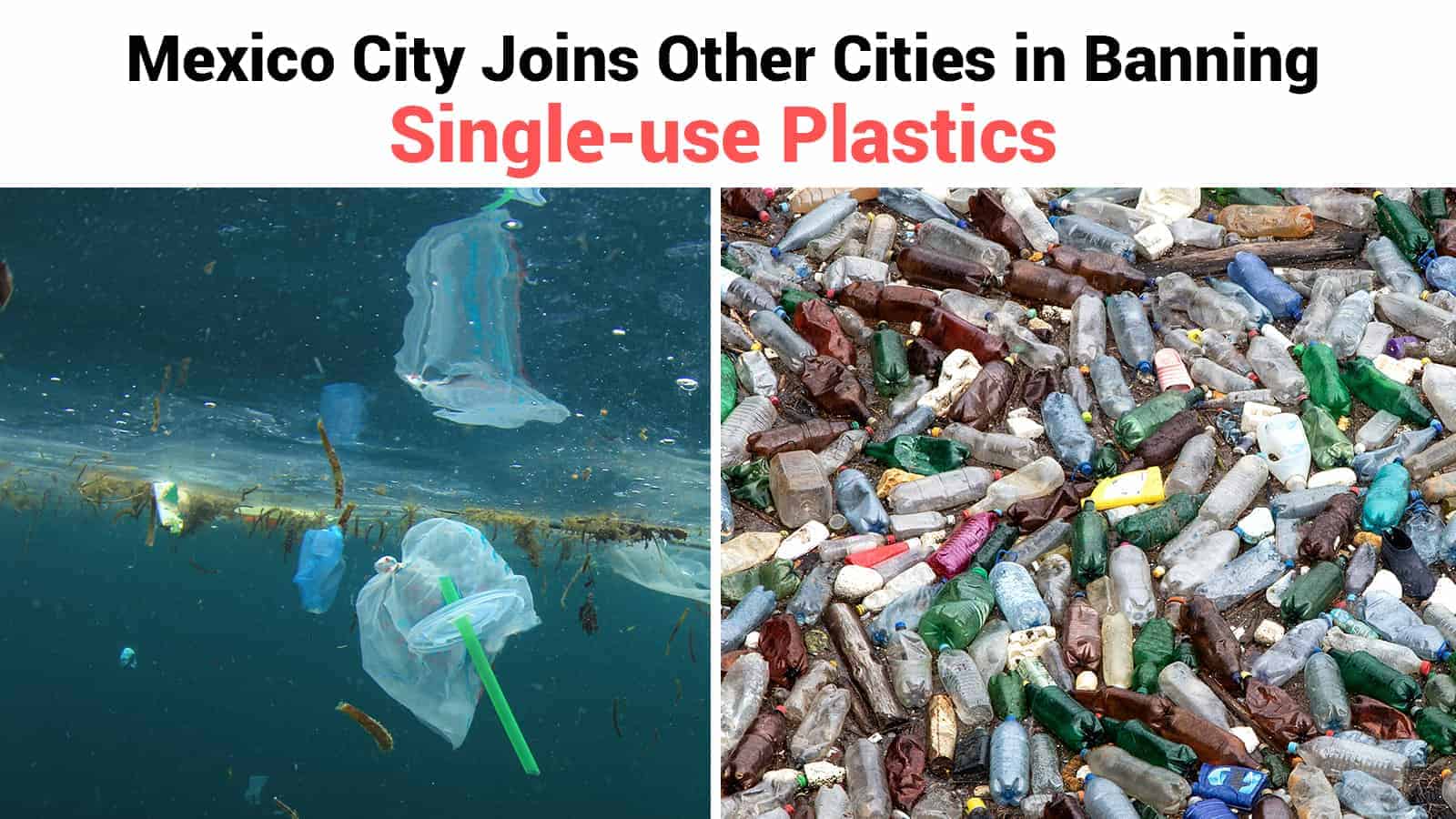Mexico City recently enacted a ban on single-use plastics, joining dozens of other cities around the world. This expands upon the restriction of plastic bags, which the city banned last January. The broad ban on plastics includes items like straws, forks, containers, and balloons. After more than a year of preparation, the ban took effect on January 1, 2021.
That day, Mexico City’s environmental secretary Tweeted that “from today on Mexico City [is] without single-use plastics.” The message encouraged people always to bring reusable containers for groceries or other store-bought items. Mexico City lawmakers first passed the ban on plastic bags, utensils, and other single-use items in 2019. In the past year, businesses and vendors have been adjusting to the new laws and researching plastic alternatives.
At street vendors’ stalls, light, biodegradable plastic bags have become more commonplace. Plastic straws have gradually been disappearing off street corners. Besides, buyers have been seen using their clothes or plastic to wrap around fresh tortillas. However, without the law being enforced with fines, some vendors still choose to use plastic.
On New Year’s Day, a tamale vendor used a plastic bag to wrap the food and offered customers plastic spoons. She said she knew about the ban. But with the pandemic, authorities haven’t been enforcing it. However, the woman said other vendors hadn’t been complying with the ban either. They’ve still been trying to figure out how to serve customers without resorting to plastic.
Hopefully, as time goes on, the government will help supply businesses with proper alternatives to adhere to the ban. According to the city’s environmental agency, Mexico City produced around 13,000 tons of garbage per day in 2019. Given that statistic, the ban seems quite necessary to quell plastic use throughout the city.
Mexico City isn’t the only city banning plastic.
 China recently banned plastic straws and single-use bags as well. Other disposable plastic bans will follow while the country integrates biodegradable alternatives. Last March, the European Union banned single-use plastics in 28 countries, and the laws went into effect this year. Many other tourist destinations throughout Mexico have also seen new rules pass regarding plastics. According to the environmental organization Greenpeace Mexico, five municipalities and 22 states in Mexico have enacted bans on plastics since 2017.
China recently banned plastic straws and single-use bags as well. Other disposable plastic bans will follow while the country integrates biodegradable alternatives. Last March, the European Union banned single-use plastics in 28 countries, and the laws went into effect this year. Many other tourist destinations throughout Mexico have also seen new rules pass regarding plastics. According to the environmental organization Greenpeace Mexico, five municipalities and 22 states in Mexico have enacted bans on plastics since 2017.
The state of Quintana Roo in Mexico also banned plastic bags, utensils, and other disposable plastics, starting within 12 months. These laws will apply first to the islands of Holbox, Cozumel, and Isla Mujeres. They will then be enforced throughout the rest of the state, including Cancún, Tulum, and Playa del Carmen. Of course, most of the laws will roll out in stages to start introducing alternatives gradually.
Mexican beach destinations have also started enforcing bans, extending from the Caribbean coast to the northwestern peninsula. Baja California Sur passed a law in July 2018 banning plastic bags, cups, straws, and polystyrene containers. The ban will go into effect in the state beginning this year.
In the U.S., some places have banned plastic straws, such as the following:
- California
- Seattle, WA and Edmonds, WA
- Washington, D.C.
- Monmouth Beach, New Jersey
- Miami Beach, FL and Fort Myers, FL
- New York City and Hawaii have pending straw ban legislation.
In 2019, San Francisco also banned the sale of plastic bottles. It became the first city in the U.S. to ban plastic bags in 2007. Hawaii and New York also have plastic bag bans. Delaware, Maine, and Rhode Island have statewide “labeling, recycling or reuse” programs.
How plastic harms wildlife, humans, and the environment
All over the world, cities and countries have started saying no to plastic. It seems the world is headed in the right direction, as more governments show concern about the environment. Because plastic doesn’t decompose, it creates hazards for wildlife and humans alike. Sadly, scientists estimate that humans swallow a credit card worth of plastic per week.
Studies show that plastics expose the human body to numerous hazardous chemicals. One of the most harmful is Bisphenol A (BPA), a chemical used in plastic bottles and containers. A Canadian research team found BPA in the urine of a whopping 95% of the adults tested. Di (2-Ethylhexyl) phthalate (DEHP), used to increase plastic’s flexibility, is another dangerous chemical found in plastic. Long-term exposure to both of these chemicals can result in these health issues:
- Reproduction problems
- Early sexual maturation problems
- A decrease in male fertility
- Promote aggressive behaviors
- Increased insulin resistance
- Obesity
As for the environment, a study by ecologists from the University of Toronto found that waterways have been disrupted by plastic pollution. The study published in September of 2020 reveals this about the scale of the plastic problem in our environment:
“The cleanup alone would require at least 1 billion people participating in Ocean Conservancy’s annual International Coastal Cleanup. This would be a Herculean task given this is 660 times the effort of the 2019 cleanup.” ~Stephanie Borrelle, University of Toronto
Some statistics on the plastic pollution problem
- 100 million marine animals die each year from plastic waste.
- An estimated 100,000 marine animals die from getting entangled in plastic yearly.
- 12-14,000 tons of plastic are ingested by North Pacific fish yearly.
- In the past ten years, we’ve made more plastic than in the last century. By 2050, the amount of plastic in the ocean will outnumber the fish population.
- The largest trash site on the planet is the Great Pacific Garbage Patch, which measures twice the surface area of Texas. Plastic there outnumbers sea life 6 to 1.
- China is ranked #1 for mismanaged waste and plastics. However, the US is in the top 20, with more plastic consumption per person.
- 300 million tons of plastic is produced yearly, weighing as much as the entire global population. 50% is single-use only.
- There are 5.25 trillion pieces of plastic waste estimated to be in our oceans. 269,000 tons float, while 4 billion microfibers per km² dwell below the surface.
- Scientists have recently found microplastics deep in the Arctic ice.
 Final thoughts: Mexico City joins many other cities in banning disposable plastics
Final thoughts: Mexico City joins many other cities in banning disposable plastics
Along with many other cities globally, Mexico City enacted a ban on single-use plastics, including plastic bags. Other towns throughout Mexico have followed the lead since 2017. Hopefully, one day we can have a plastic-free world so all life on Earth can thrive.


















